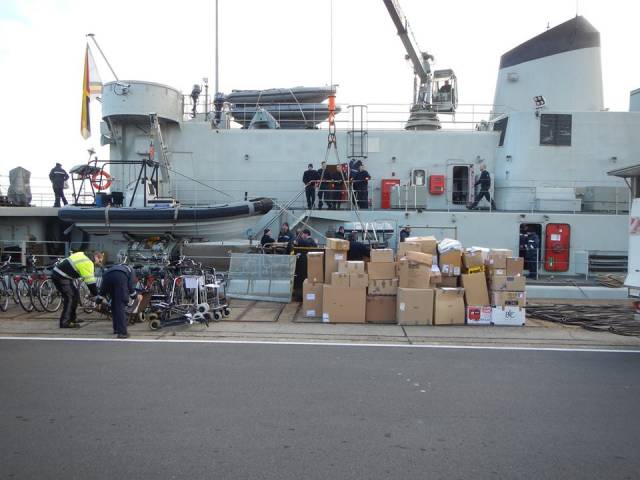#NavalVisits - A Belgian Navy 'Tripartite' class minecounter measures vessel remains in Dublin Port whereas an accompanying command logistics supportship which had been on a mission to west Africa, departed the capital yesterday, writes Jehan Ashmore.
Also taking place yesterday, the 51m (MCM) minecounter measures BNS Bellis shifted berths following a weekend stay upriver and closer to the city-centre at Sir John Rogersons Quay. It was also from here that the 91m command supportship, BNS Godetia had spent time too in the capital for crew rest and recreation after arriving from Tenerife. This marked the latest leg of a return voyage from west Africa to Belgium.
The deployment of BNS Godetia to west Africa was for a third time. On this latest mission it involved co-operating with the 'Maritime Operation and Analysis Centre' based in Lisbon, Portugal from where anti-drug /piracy operations are co-ordinated. This saw the Belgian Navy carry out patrols in an effort to combate illegal drugs trafficked from South America bound for Europe via west Africa.
Prior to departing Osstende last month, among humanitarian cargoes loaded on the ship equipped with a stern heli-deck, were medical supplies. The mission involved calling to ports among them Banjul, capital of The Gambia. The west African state is surrounded by Senegal, except for the small stretch of the Gambia coastline along the Atlantic Ocean.
According to Ships Monthly, the Belgium Government are to replace the BNS Godetia and BNS Bellis (commissioned in 1986) with newbuilds. The 'Tripartite' MCM's were a collaboration of the Belgium, Dutch and French navies however the class are ageing. The replacement project costing €1.1 billion for the Belgian Navy is for six new 'mother ships' and the same number is to apply to the Royal Netherlands Navy, with deliveries scheduled between 2021-2030.
Prior to the pair of Belgian Navy's arrivals last Friday to Dublin Port, BNS Bellis was monitored by Afloat carrying out coastal manouveres between Wicklow coast and Arklow Bank. The MCM ship had sailed from the naval base in Zeebrugge, Belgium.
On departure from Dublin Port yesterday, BNS Godetia headed out via the North Burford Bouy and beyond the Kish Bank Lighthouse and proceeded southwards bound for Zeebrugge. The ship with its 80 crew is understood to be calling to a UK east coast port prior to a scheduled return home to Belgium on Friday.































































